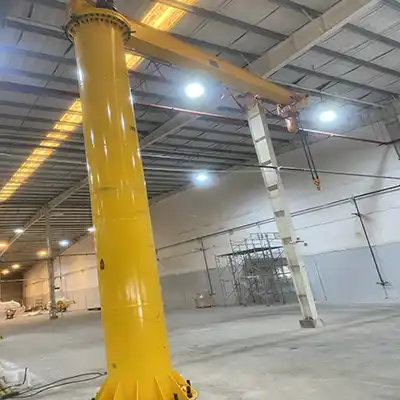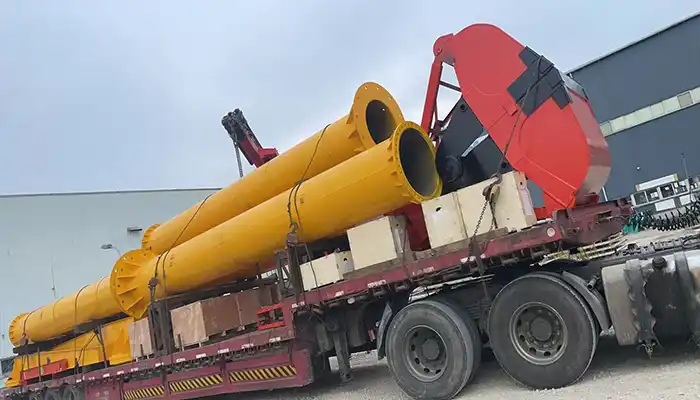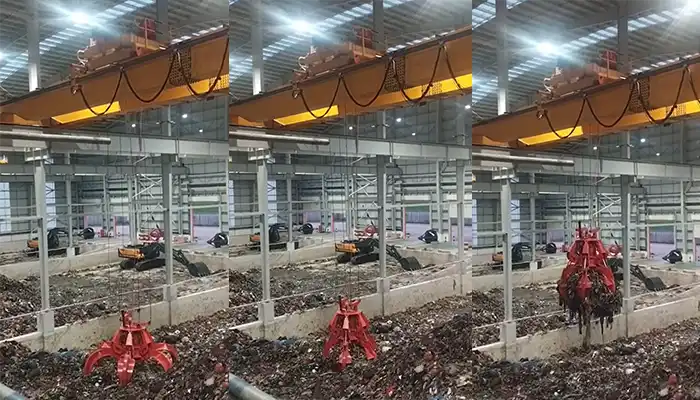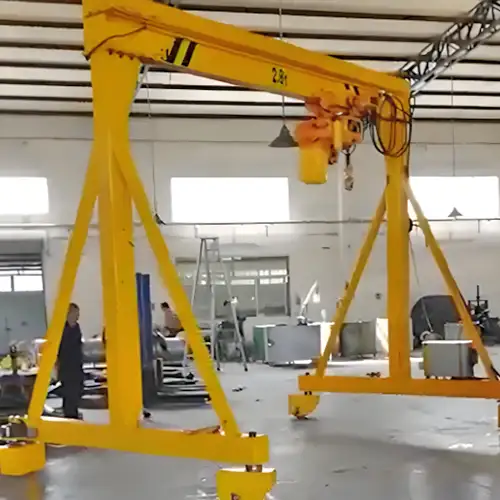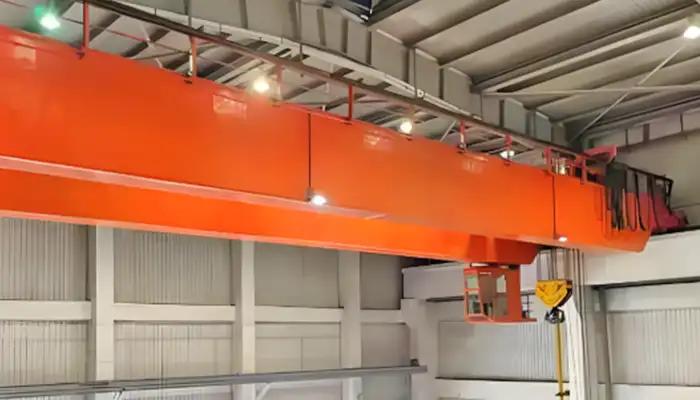
Tonnage vs. Cutting Cost: Crane Capacity and Beam Processing
Higher crane tonnage requires thicker beams, leading to increased cutting, welding, and reinforcement costs in beam processing.
When you're dealing with overhead cranes, the tonnage of the crane plays a big role in how much it costs to process the beams. The heavier the crane, the thicker the beams need to be, and that directly impacts your beam cutting fees. It’s simple: stronger, thicker beams are more expensive to cut and process.
Why does this matter? For crane buyers and manufacturers, understanding how tonnage affects beam processing can help you make smarter decisions. It’s all about balancing your crane’s capabilities with the costs of producing the beams that will support it.
Overhead Crane Costs and Beam Processing
Importance of Beam Quality and Strength
Beams are the backbone of an overhead crane. They need to be strong enough to handle the weight and stress the crane will bear during operation. For high-tonnage cranes, you need thicker beams, which means they’re heavier and require more precision when being cut.
Thicker beams are not just about size—they also need to withstand more stress, so they must be made with high-quality materials. This drives up the cost of beam processing because manufacturers have to use better materials and more advanced techniques to ensure these beams will perform safely and effectively.
Specialized Beam Cutting
When it comes to cutting beams for high-tonnage cranes, it’s not as simple as slicing through standard steel. High-tonnage cranes, especially those above 20 tons, require more precise and specialized beam cutting. Here’s why:
- Advanced Cutting Techniques: The thicker and stronger the beam, the more specialized the cutting equipment. Cutting these beams requires heavy-duty machinery, such as laser cutters or high-powered saws, which are more expensive to run.
- Skilled Labor: It’s not just about the machines. Skilled workers are needed to handle these complex beams, ensuring the cuts are perfect. Experienced welders and machinists are required to ensure that the beams are cut to exact specifications, and this expertise adds to the overall cost.
In summary, for high-tonnage cranes, cutting becomes a much more complex and expensive task. It’s all about precision and the quality of materials used, which directly impacts the final processing fees.
 overhead crane girder
overhead crane girder
Impact of Larger Crane Span Length
Crane Span and Structural Complexity
When it comes to crane spans, bigger is not always better—at least when it comes to costs. The longer the crane span, the more challenging it becomes to design and build the supporting beams. Here’s how span length directly impacts the beams:
- Beam Size and Type: Longer spans need larger, stronger beams. To support the extended length, you often need thicker or specially shaped beams. These changes in size or type mean more material is required, which drives up the cost.
- Increased Complexity: A larger span doesn’t just mean a bigger beam; it also adds complexity to the overall structure. Engineers need to account for additional stress and weight distribution. This increases the time and effort needed for design, cutting, and assembly. More complicated beams are harder to cut and weld accurately, which leads to higher fees for processing and labor.
How Span Affects Beam Reinforcement
Now, let’s talk about reinforcement. Longer spans require beams that are not only bigger but also stronger. This increases both material and processing costs:
- Stronger Beams for Support: To ensure the crane can safely carry heavy loads over a large span, the beams must be reinforced. This reinforcement can take various forms, such as thicker steel, additional welding, or even internal support structures. All of this adds up in terms of material cost.
- Precision in Cutting and Welding: With increased reinforcement comes the need for higher precision in cutting and welding. The longer the span, the more likely you’ll need custom cuts or intricate welds to maintain the beam’s strength. These precise tasks require advanced equipment and skilled workers, which naturally increase the cost of beam processing.
To sum it up, longer spans lead to stronger, more complex beams. This not only increases the material costs but also raises the need for more specialized labor and equipment to ensure the beams are properly cut, reinforced, and assembled.
The Role of Tonnage in Beam Processing
Advanced Cutting Techniques for 20T+ Cranes
When you're dealing with cranes that have a tonnage of 20 tons or more, the complexity of beam processing goes up significantly. Here’s why:
- Specialized Equipment: High-tonnage cranes require beams that are much thicker and stronger than those used in smaller cranes. Cutting these heavy-duty beams requires specialized equipment. Think along the lines of industrial-grade laser cutters, plasma cutters, or water jets that can handle the thick steel. These machines are more expensive to run, and they require skilled operators to get the job done precisely.
- Advanced Cutting Methods: For beams supporting heavy loads, the cutting methods need to be precise to ensure the beams will hold up under stress. For example, high-tonnage beams often need to be cut with a high degree of accuracy to fit specific crane designs. These advanced cutting techniques ensure the structural integrity of the beams and their ability to support the heavy lifting demands of a 20T+ crane.
Stress-Relieving and Reinforcement
With higher tonnage comes increased pressure on the beams, so additional processes are necessary to ensure safety and longevity:
- Stress-Relieving: After cutting, the steel beams for high-tonnage cranes typically undergo a stress-relieving process. This involves heating the steel to a specific temperature to reduce internal stress created during cutting or welding. Stress-relieving helps prevent the beams from warping or cracking under heavy loads, ensuring that the crane operates safely and efficiently over time.
- Reinforcement for Structural Integrity: High-tonnage cranes also require additional reinforcement to handle the immense weight they’ll be lifting. This reinforcement can include adding extra steel plates, welding additional supports, or modifying the beam’s design to ensure it won’t buckle under heavy loads. The reinforcement process increases material costs, as well as labor costs, since it requires precision and expertise.
In short, for cranes with a tonnage of 20 tons and above, the beam processing process becomes much more specialized. Advanced cutting techniques, stress-relieving, and reinforcement are all necessary steps to ensure the crane’s beams can handle the load and remain safe for long-term use. This increases both the complexity and cost of processing these beams.
Cost Breakdown
Factors Contributing to Higher Cutting Costs
When it comes to processing the beams for overhead cranes, several factors significantly increase the overall cost. Here’s a breakdown of what drives up the price:
Material Thickness and Cutting Precision: Thicker beams for overhead cranes require more powerful cutting equipment. The heavier the overhead crane, the thicker the beams needed to support its crane capacity. Cutting these thicker beams demands higher precision and more specialized machinery, which drives up both time and material costs.
Additional Processes: For high-tonnage overhead cranes, extra processes are needed to ensure the beams perform properly:
- Welding: The beams for overhead cranes must often be welded together or reinforced, which involves skilled labor and special welding techniques. This adds to the cost of processing.
- Stress-Relieving: Overhead crane beams, especially for higher tonnage, need to undergo stress-relieving to avoid warping or cracking under load. This adds both energy and material costs to the process.
- Reinforcement: To handle the weight and stress from lifting, overhead crane beams must be reinforced. This involves adding extra material or reworking the design, which increases the cost of both the beams and labor.
Cost Implications for Different Crane Capacities
The tonnage and span of your overhead crane directly affect the cost of processing the beams that support it. Here's how:
Crane Tonnage and Span Interaction: The higher the crane tonnage, the more robust and thicker the beams need to be. When combined with a larger span, the complexity and cost of processing the beams increases. A 20-ton overhead crane with a large span requires more specialized beam cutting, welding, and reinforcement compared to a 10-ton crane with the same span. The thicker and reinforced beams come with additional costs due to the greater load-bearing capacity required.
Comparing Beam Processing Costs for Different Overhead Cranes:
- 10T Overhead Cranes: The cost of processing beams for a 10-ton overhead crane will be lower, as the beams are thinner and simpler to cut. Welding and reinforcement are less complex, reducing the overall costs.
- 20T Overhead Cranes: For a 20-ton overhead crane, costs increase. The beams need to be thicker, and the cutting process becomes more precise. Additional processes like welding, stress-relieving, and reinforcement are necessary, which adds to the cost.
- 50T Overhead Cranes: For a 50-ton overhead crane, the processing costs rise significantly. The beams are much heavier and need advanced cutting techniques. Reinforcement and stress-relieving become more intensive, which increases both material and labor costs.
In conclusion, the tonnage and span of an overhead crane directly affect the cost of beam processing. The larger the crane’s capacity and span, the more expensive the materials, labor, and machinery needed to produce and process the beams. Buyers should carefully consider these factors when selecting an overhead crane to ensure the right balance between crane capacity and processing costs.
Here’s a simpler and more readable version of the table:
| Crane Capacity | Beam Processing Features | Cost Impact |
|---|---|---|
| Up to 10 Tons | - Thinner beams- Simple cutting and welding | - Low costs- Basic equipment and less labor |
| 10 to 20 Tons | - Thicker beams- More precise cuts- Extra welding and stress-relieving | - Moderate costs- More material and labor needed |
| 20 to 50 Tons | - Much thicker beams- Advanced cutting and welding- Reinforcement needed | - Higher costs- Specialized equipment and skilled labor required |
| Above 50 Tons | - Large, heavy beams- Custom cuts- Extensive reinforcement and stress-relieving | - Very high costs- Custom materials, special machinery, and expert labor needed |
This version breaks it down in a clearer, more straightforward way, highlighting the key points for each crane capacity. The higher the tonnage, the more complex and expensive the beam processing becomes.
Conclusion
In summary, the tonnage and span of your overhead crane have a significant impact on the cost of beam processing. The higher the tonnage, the thicker and stronger the beams need to be, which requires more advanced cutting techniques, welding, stress-relieving, and reinforcement. Longer crane spans only add to this complexity, increasing the material and labor costs further.
To manage these costs, crane buyers must understand how tonnage and span interact to affect the overall expense. Opting for higher tonnage and larger spans means higher beam processing costs due to the need for specialized equipment, skilled labor, and additional processing steps. Balancing crane capacity with cost efficiency is essential, as it helps ensure that you are not overpaying for unnecessary capacity while still meeting your lifting requirements.
Additional Considerations
Maintenance Costs for High-Tonnage Cranes: It’s also important to consider that high-tonnage cranes come with higher long-term maintenance costs. As these cranes are subject to greater wear and tear due to the heavy loads they lift, maintenance and repair costs can add up over time. This ongoing expense can influence the overall cost of ownership, so buyers should factor it into their decision-making process.
Recommendations for Crane Buyers: When selecting a crane, it’s important to assess both the initial beam processing costs and the long-term costs associated with crane operation. Here are a few tips for buyers:
- Assess Your Actual Lifting Needs: Consider the typical load and span your operation requires. You don’t want to oversize your crane capacity if it’s not needed, as this will unnecessarily drive up beam processing costs.
- Factor in Maintenance: Look beyond just the purchase price and consider how much it will cost to maintain the crane over time. High-tonnage cranes require more upkeep, which could impact your overall budget.
- Work with Experienced Manufacturers: Partnering with a manufacturer who understands the relationship between crane tonnage, span, and beam processing costs can help ensure that you get the best crane for your needs at a reasonable price.
By considering both short-term and long-term costs, crane buyers can make a more informed decision, ensuring that their crane meets operational needs without overpaying for unnecessary features.
